
Basic hand tools for electronics assembly
Though the software tools vary with different microcontrollers, many hardware tools are the same.
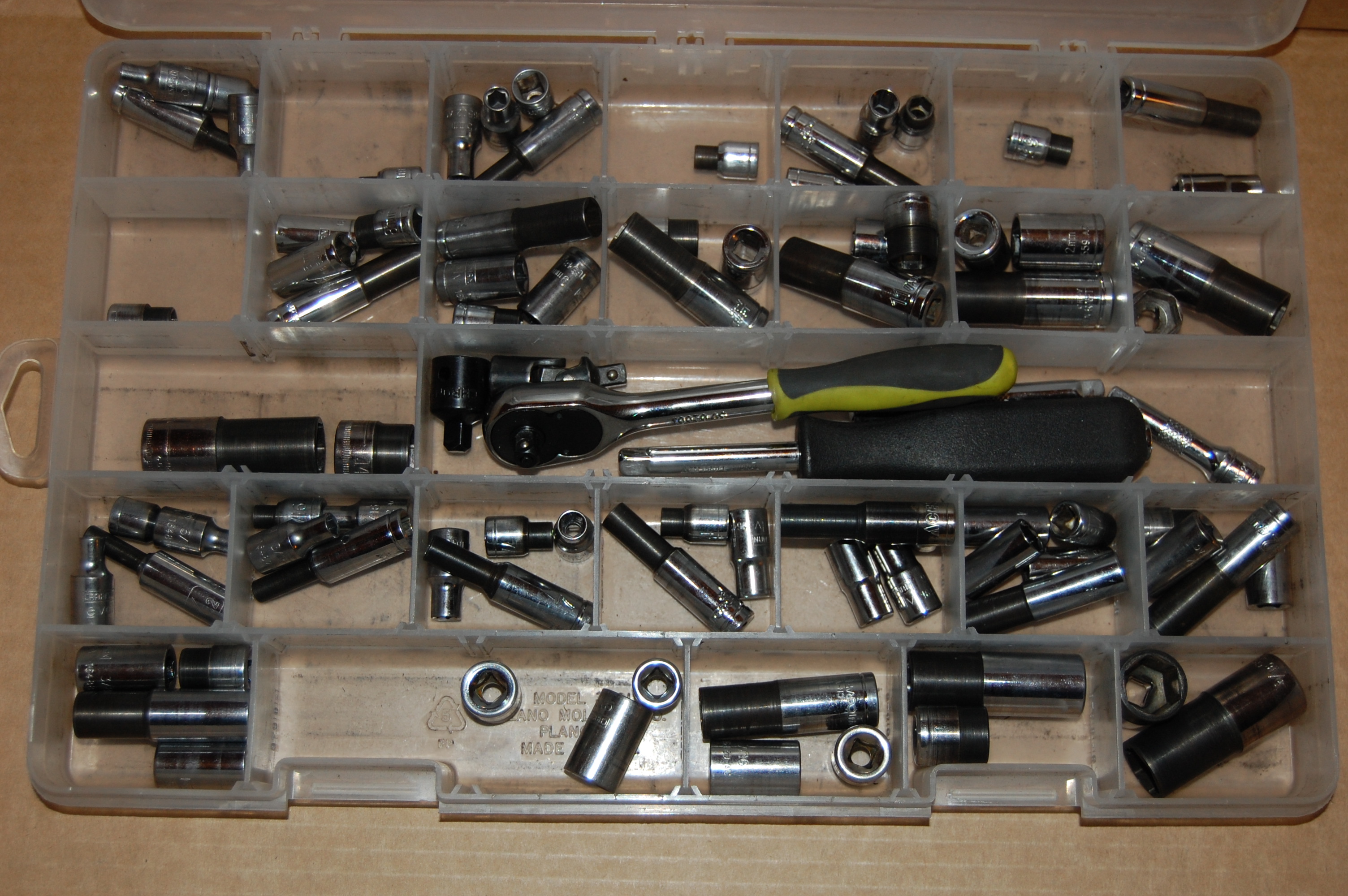
If you are working on larger robotic or automotive systems, you will need a 3/8" and 1/2" drive socket set. There are occasions when even larger drive socket sets are needed. For small robots and taking things apart, the 1/4" drive socket set is useful. The sizes usually range from 5/32" to 9/16" and 4mm to 15mm. You will need both shallow and deep sockets, both standard and metric sizes. These sockets have been turned on a lathe to produce thinner walls for better clearance, regular unmodified sockets will work in most cases.
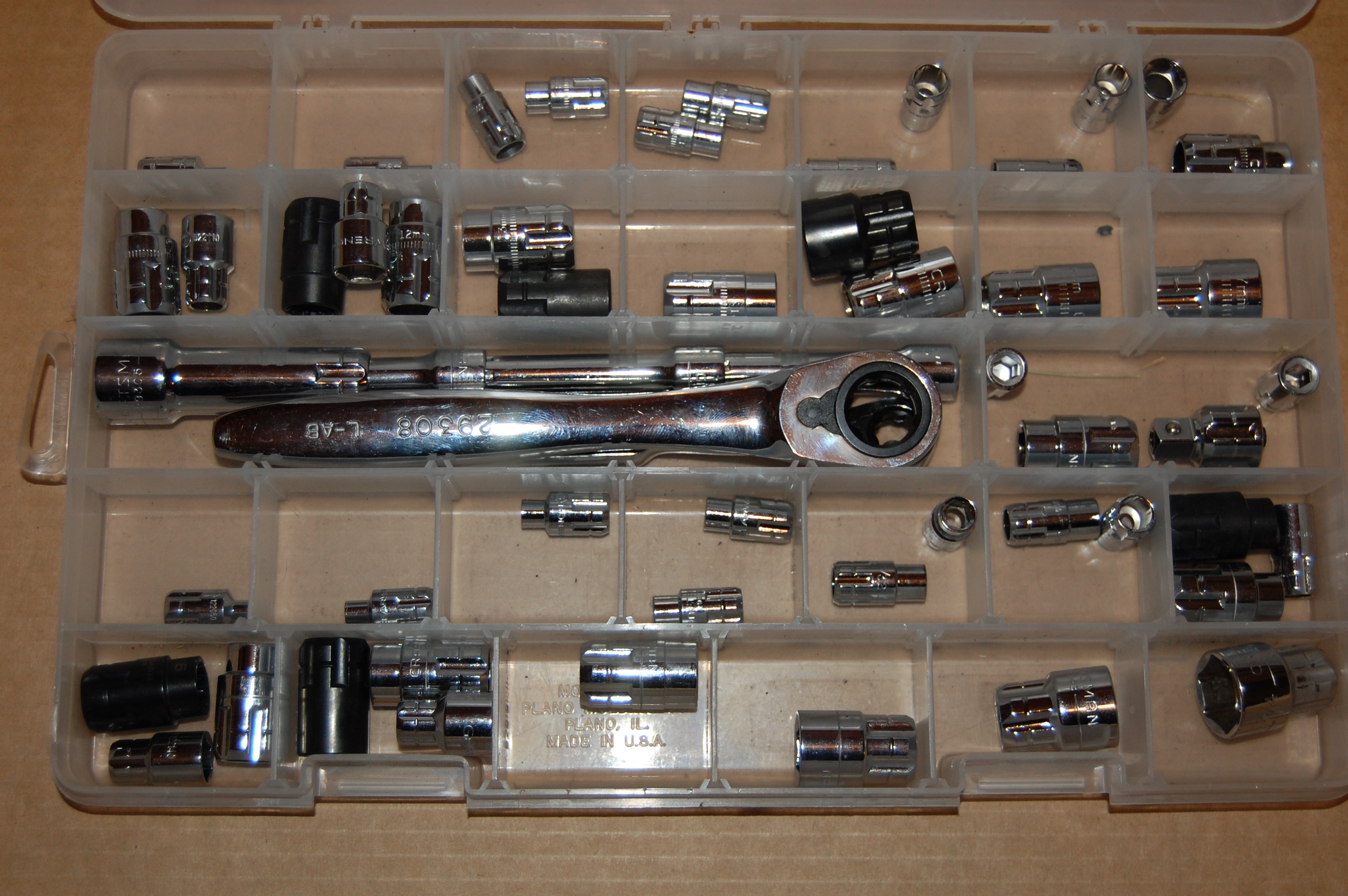
If you find that you are working with long shafts, like potentiometers or long bolts, a set of pass-through sockets may be useful. They are made so that the shaft can pass completely through the end, and not have clearance issues as you will sometimes have with regular sockets.
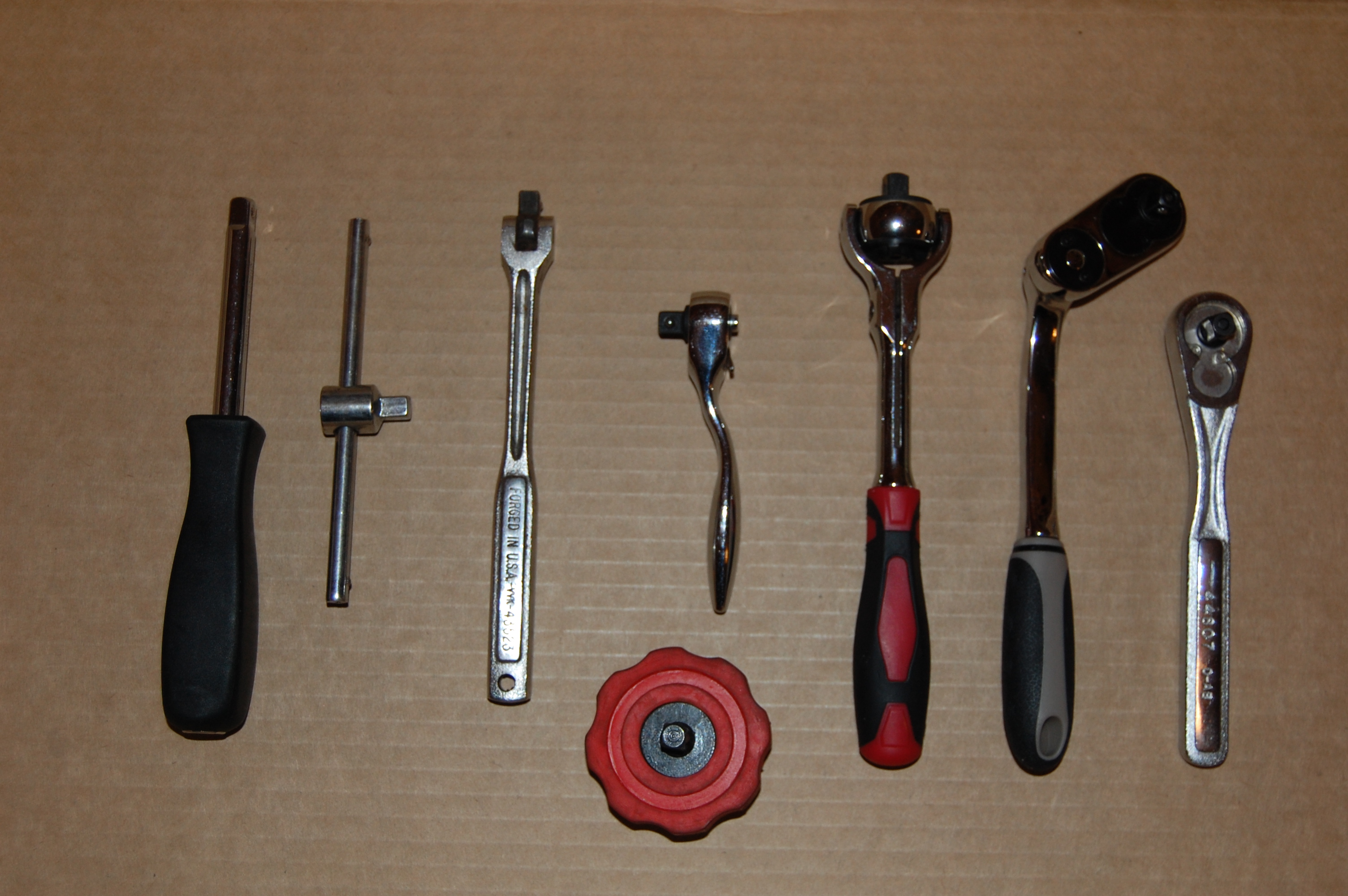
A variety of drive tools is useful, also. On the left is a spinner handle with a drive socket in the handle. It lets you turn sockets by hand, and the drive end lets you inset a sliding t-bar or breaker bar (next) to apply more torque. Tiny ratchets are needed for small places. Ratchets that let the head tilt or pivot are useful for hard-to-reach places.
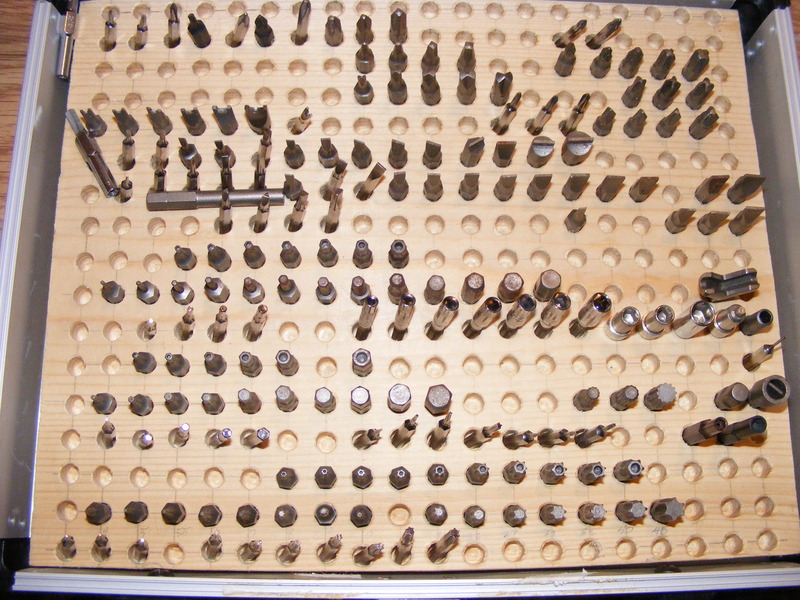
A variety of screwdrivers are needed. If you are making your own devices, you can usually choose the fastener you use. Usually a #2 Phillips and a flat screwdriver are needed. If you take apart existing equipment, you can run into about every shape of screwdriver you can imagine from Phillips to square to triangle, not to mention the "tamper-proof" drivers.
This wikipedia link show different drive types: https://en.wikipedia.org/wiki/List_of_screw_drives
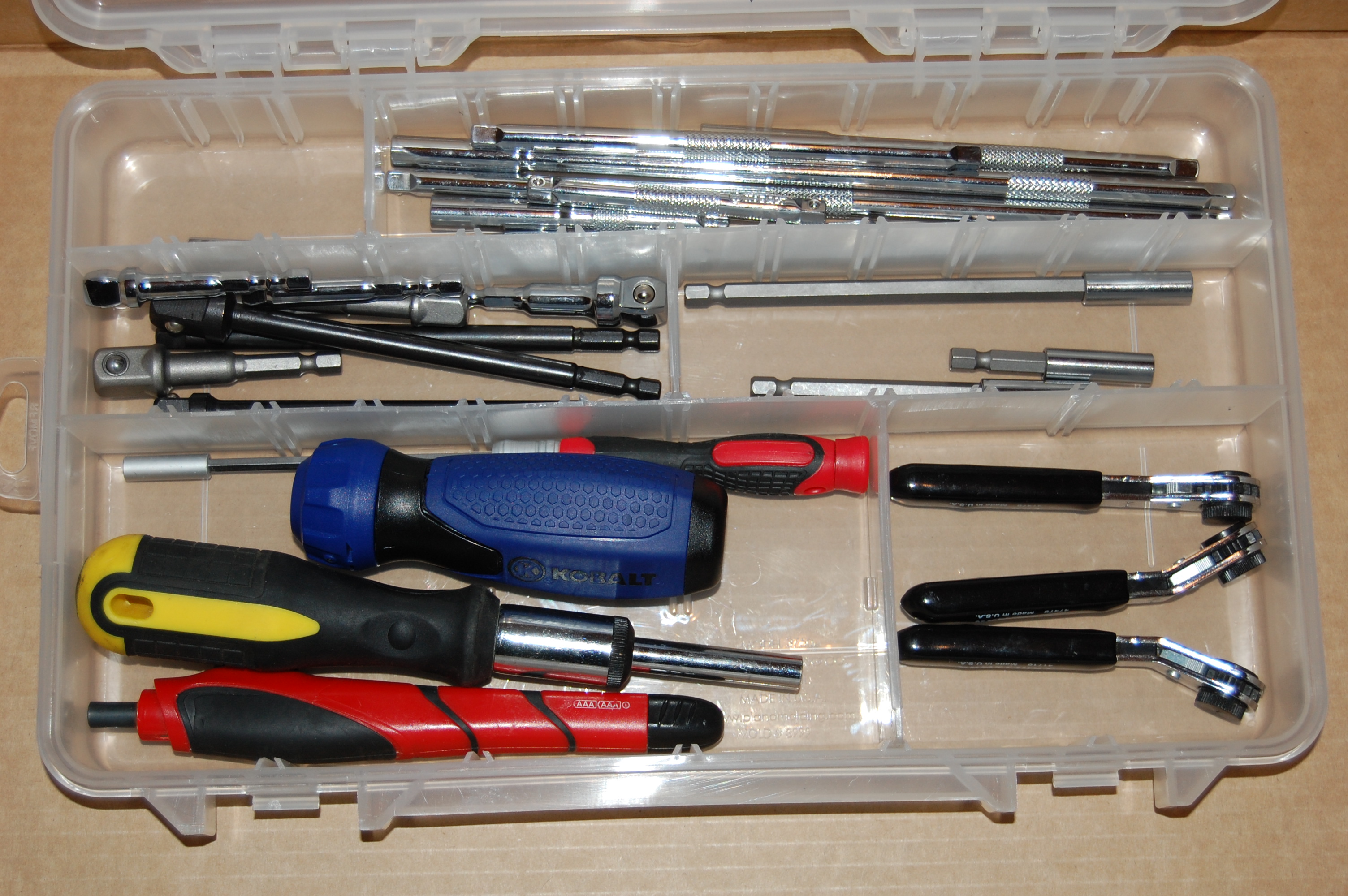
These are handles for the 5/32" and 1/4" drive screwdriver bits. A variety of different lengths is needed. Keep in mind, though, this type of screwdriver won't work in all situations, because they must have a sleeve for the bits to be inserted into. You may also need a regular set of screwdrivers (up to at least 8" long if possible), to have all situations covered.
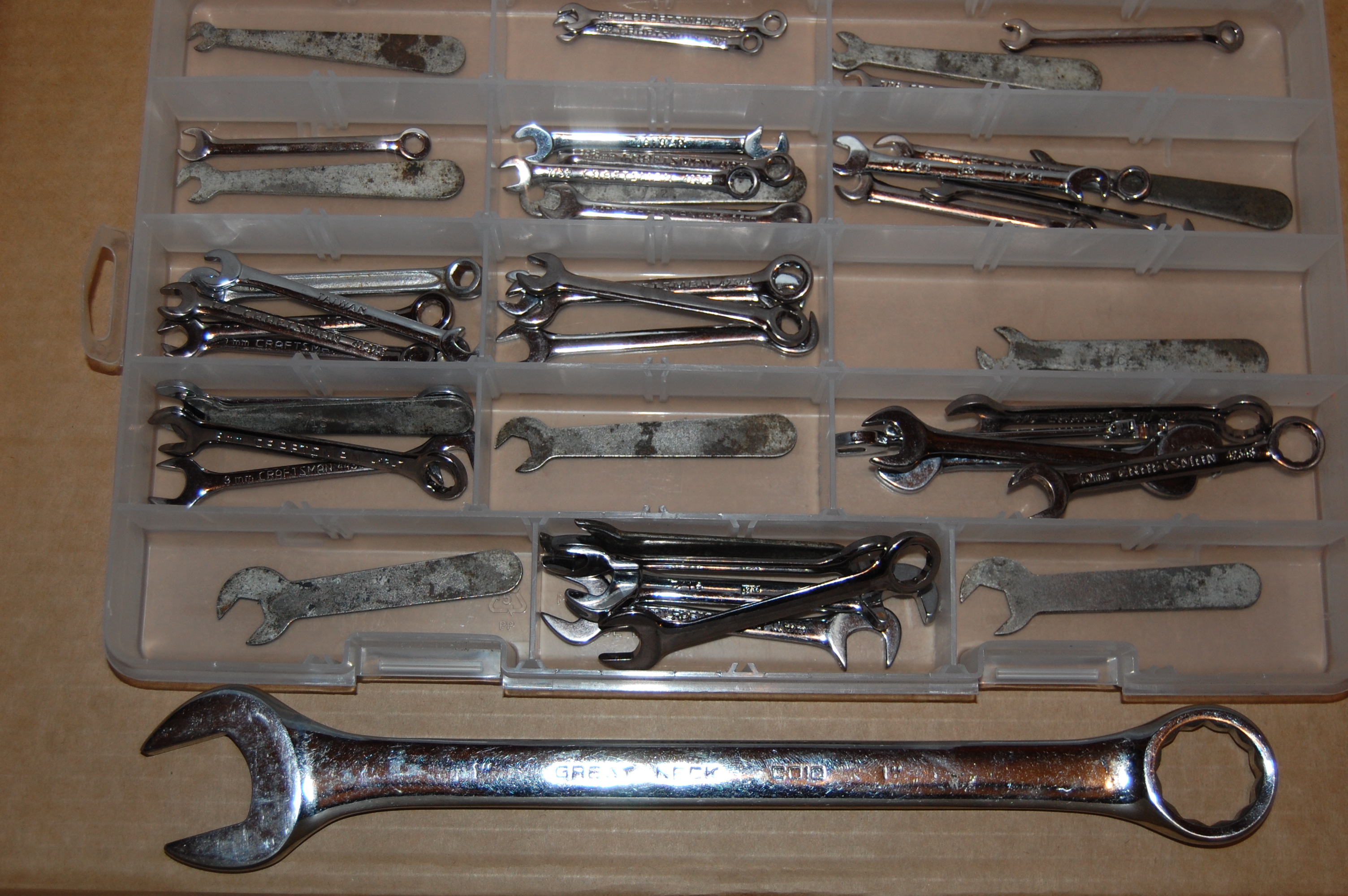
Unless you work on large machines, you probably won't need a 1" wrench as shown at the bottom. Ignition wrenches were originally made for working on automotive ignition systems, but are usefull when tightening small fasteners on a robot chassis or electronics panel.
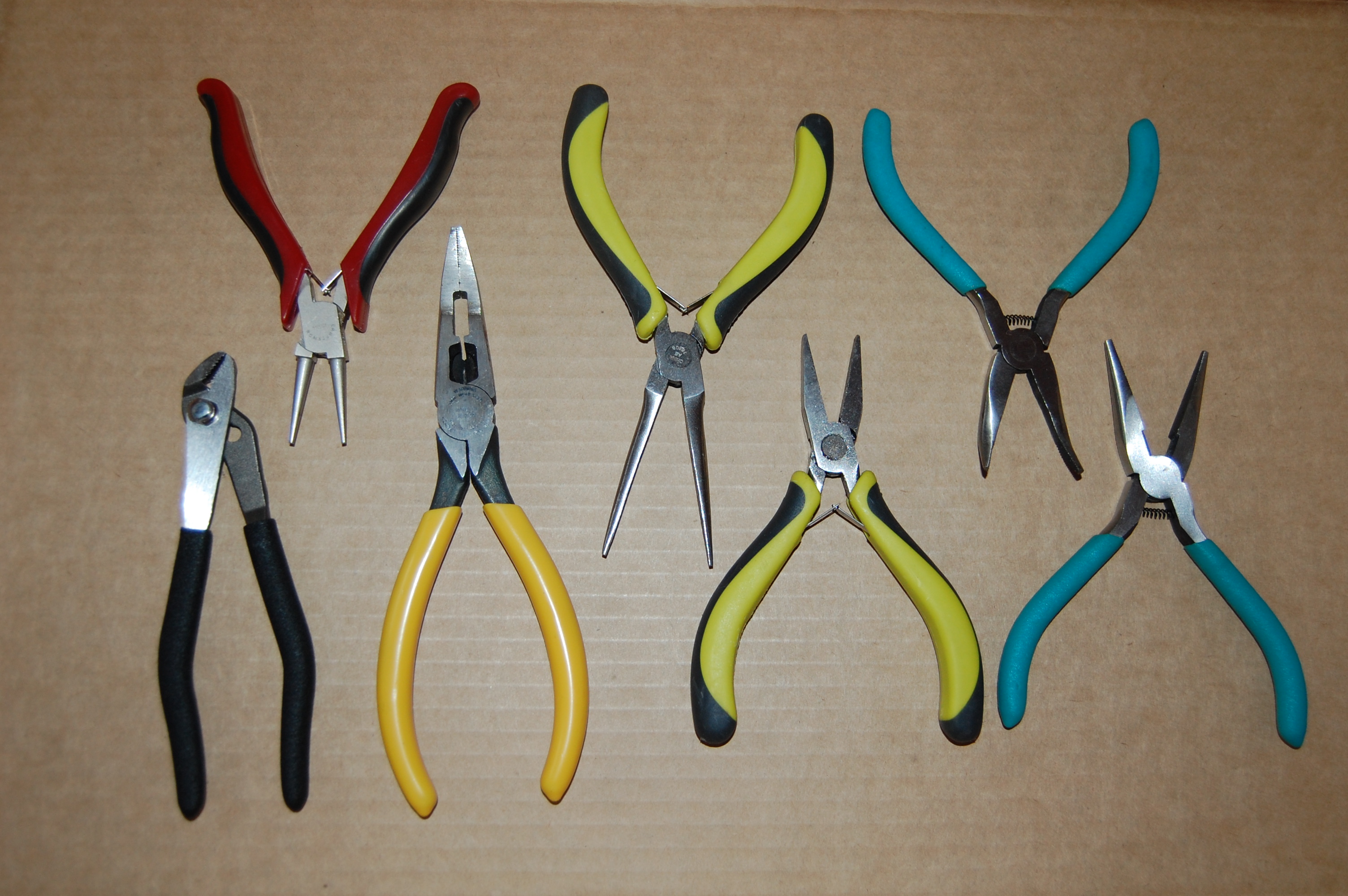
A variety of pliers are useful for holding materials. They can be used to hold a nut on a bolt while you get it started, but will probably slip off and cause damage if used for final tightening. Round jaw pliers can be used for forming resistor and capacitor leads.
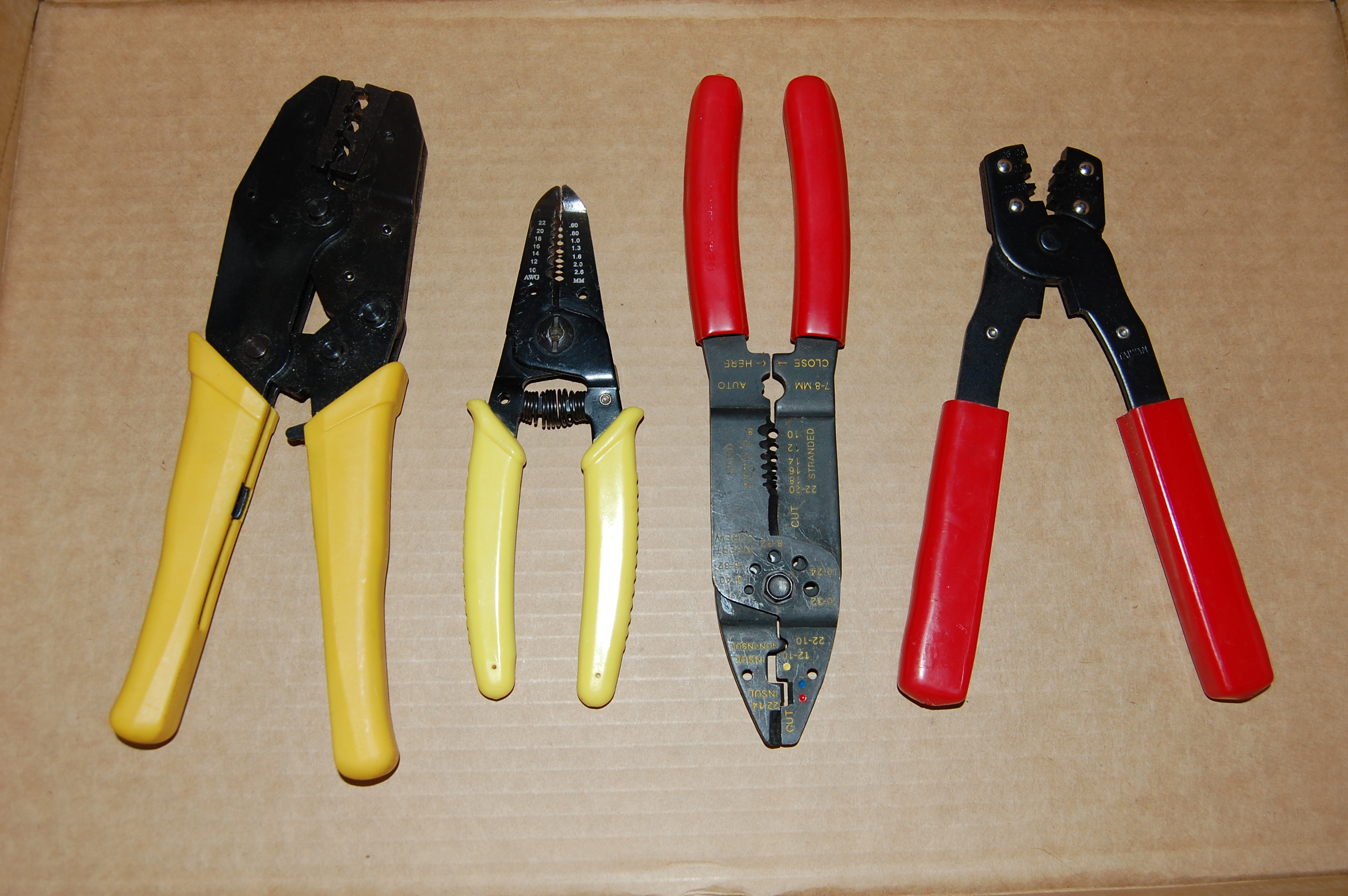
Wire stripping pliers (2) have notches for different sizes of wire, and let you remove the insulation without damaging the wire. Some crimping pliers are used for automotive type connecters (1,3), D-sub crimpers are used for D-sub connectors, telephone crimpers and Cat-5 crimpers are used for their connectors.
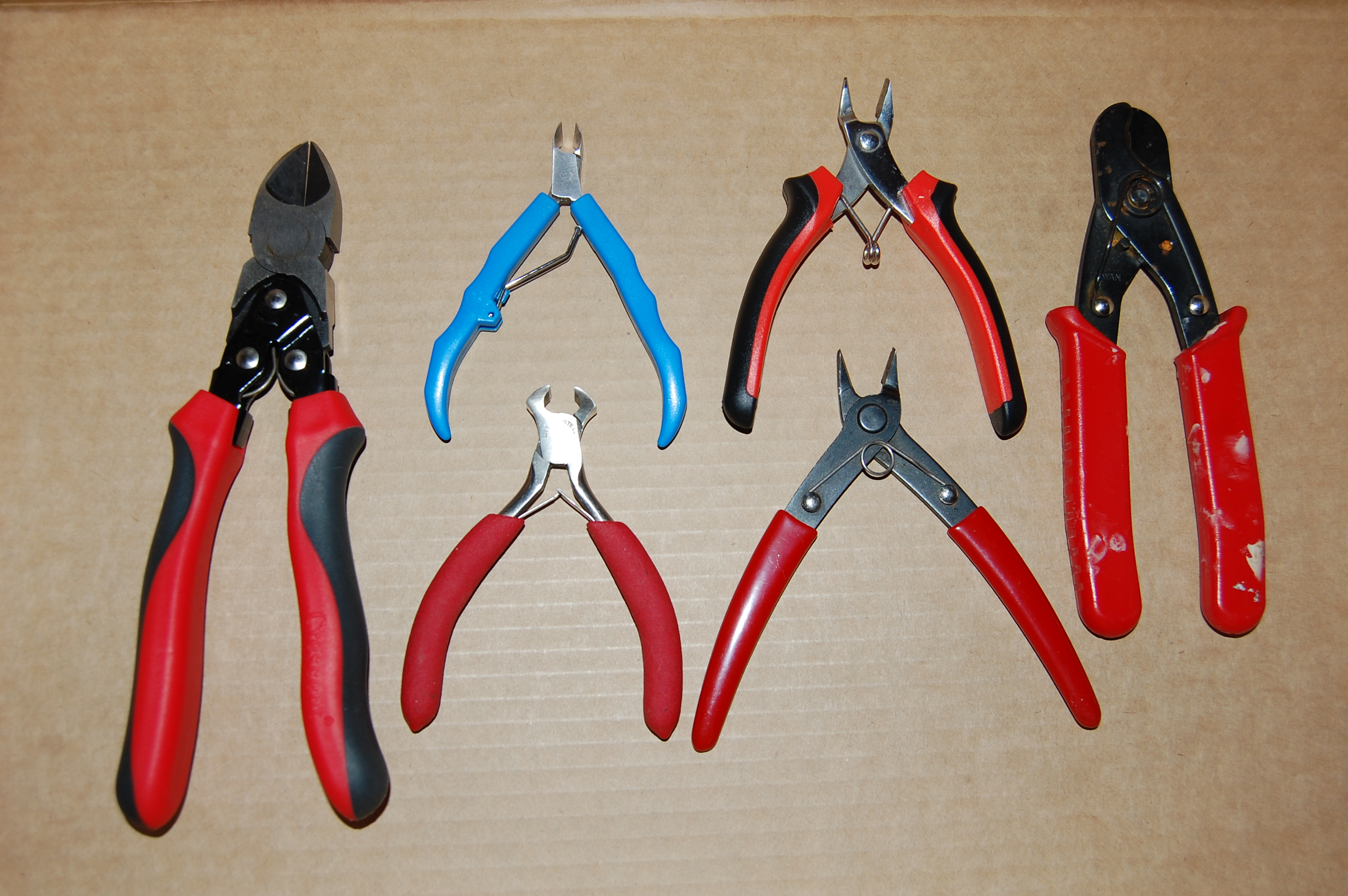
Wire cutters do just that. A variety of types are available. Diagonal cutters are needed. If you make circuit boards with through-hole components, a pair of flush cutters are need to trim the leads sticking through. Cable cutters (right) make clean cuts through larger materials like coaxial cable.
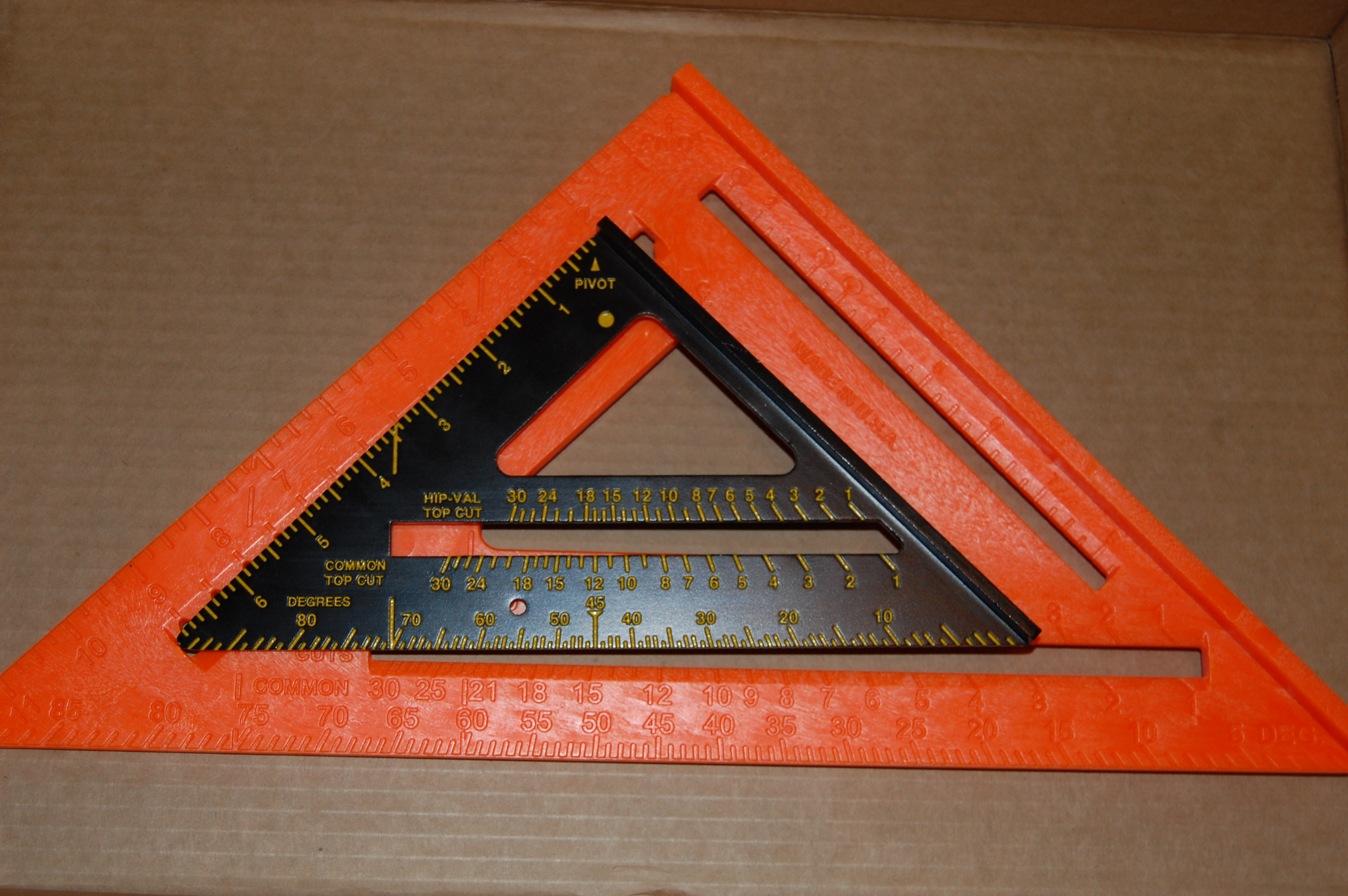
A speed square is useful when you are laying out project enclosures. Once the holes are layed out, you can use either a corded or cordless drill to drill them.
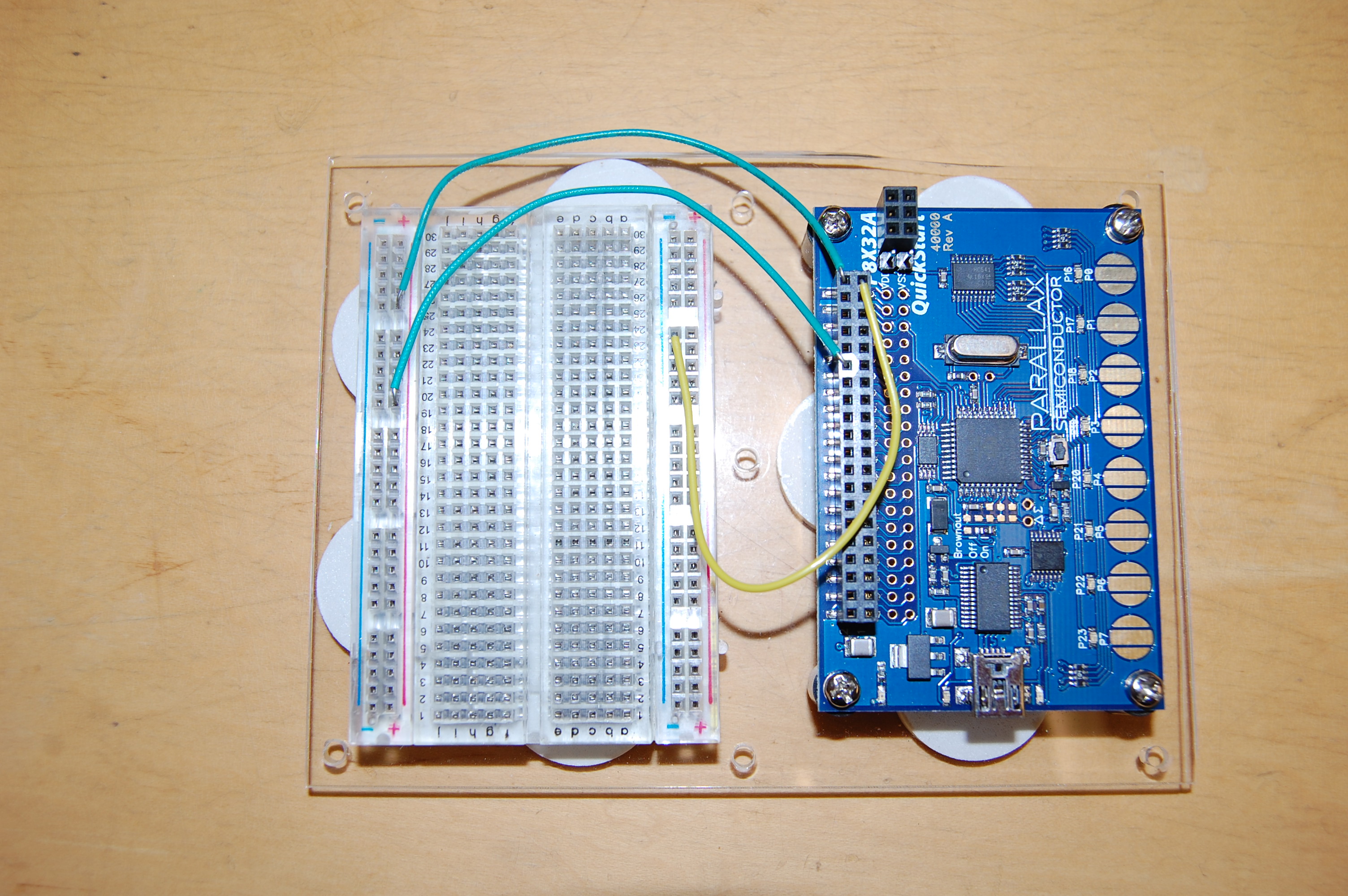
It can be used as a guide when cutting plexiglass with a special cutter to make board holders. Having both the microcontroller board and breadboard mounted together on a solid structure can make projects flow smoother, and have less problems with wires pulling out.
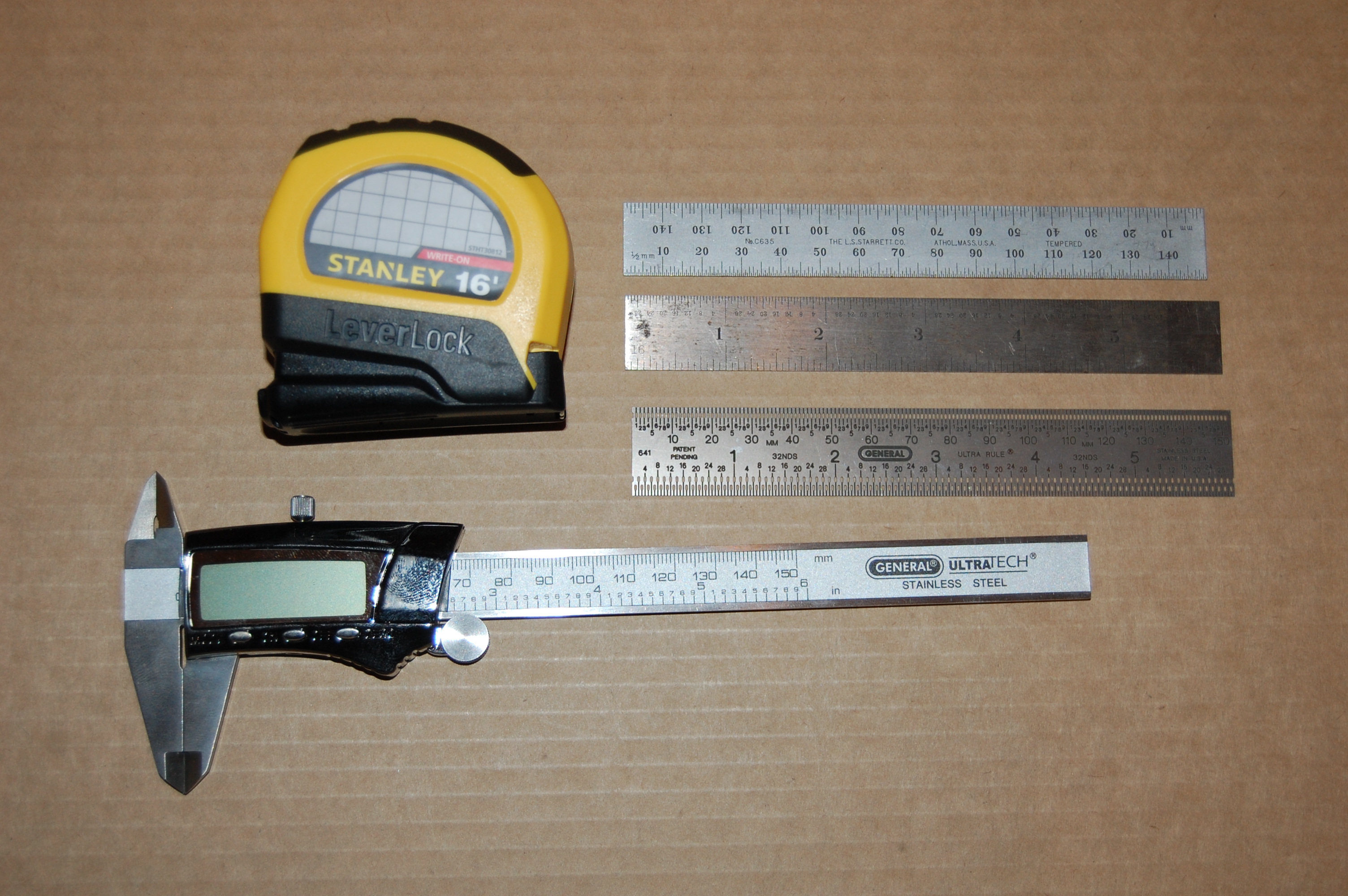
Rulers and tape measures are needed for measuring sizes and also for layout. Calipers are useful when trying to determine drill bit size for a component.
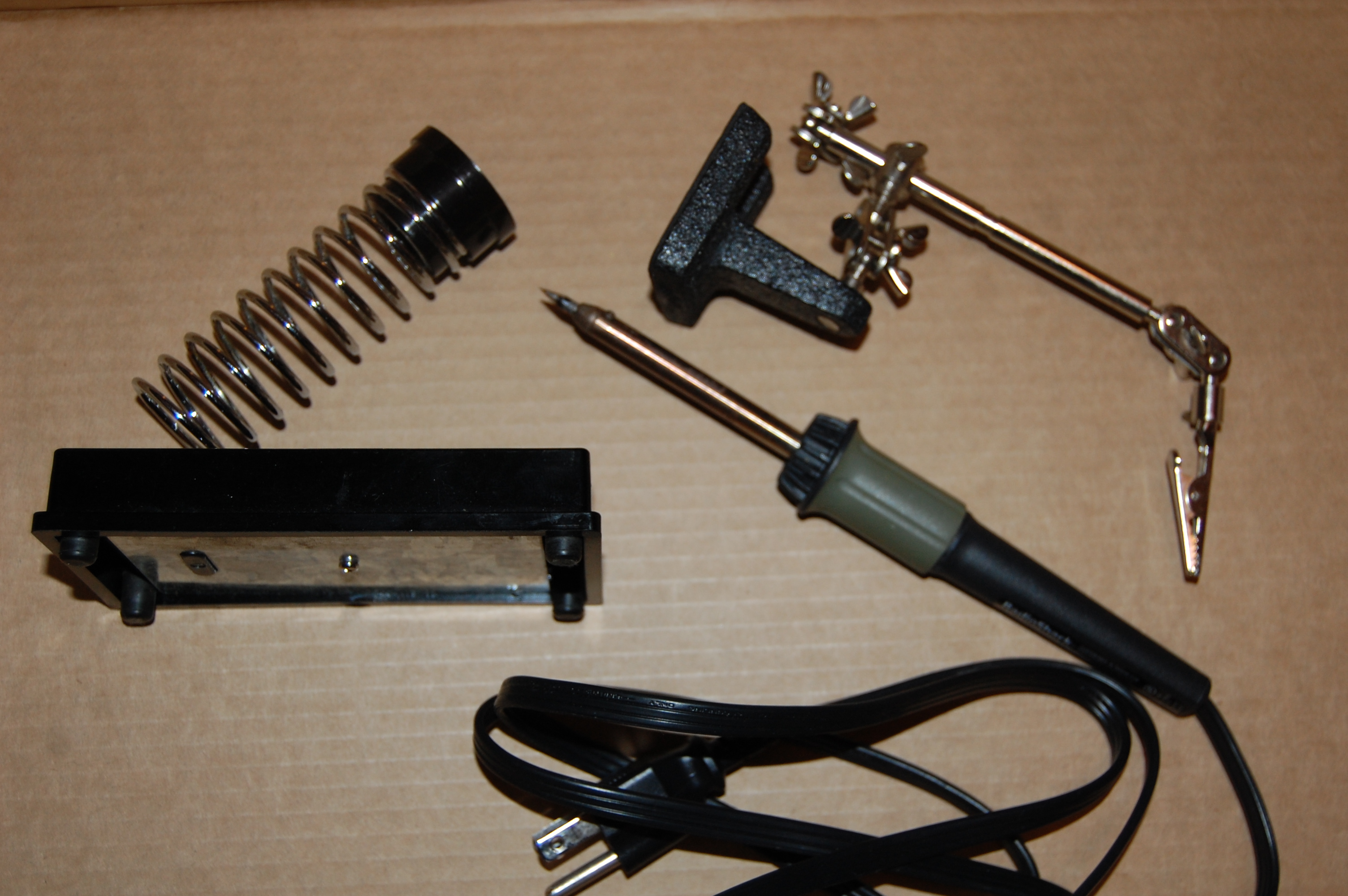
A soldering iron is need for some assembly. A stand holds it out of the way. A "helping hands holder" can hold the circuit board or components while you solder them. Some of the cheap models are not made well and can move around in use.
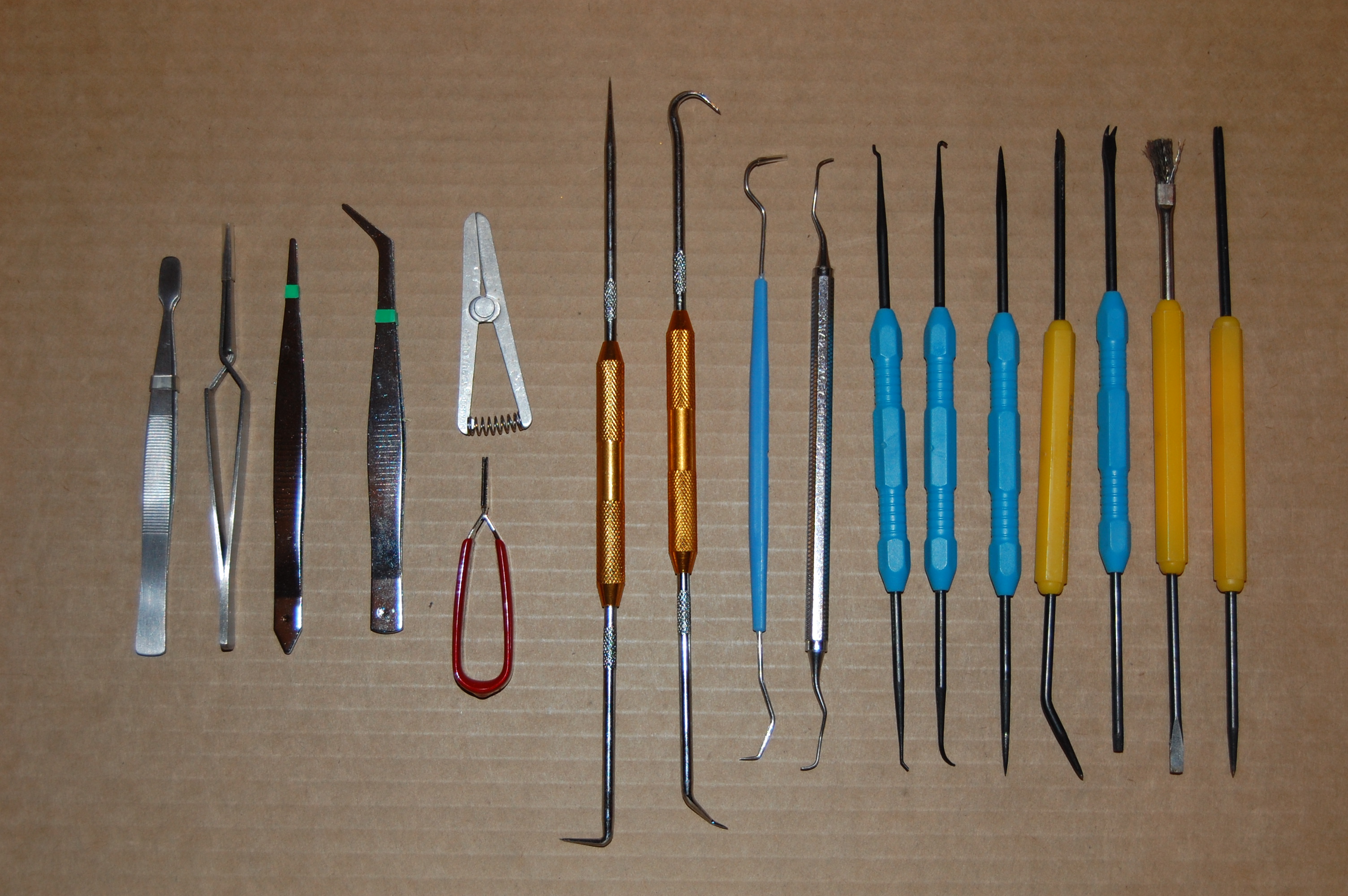
A variety of scrapers and tweezers are useful to hold things.
With this basic set of tools, you can assemble many kits and even make your own enclosures and project boards.

- Comments
- Write a Comment Select to add a comment

To post reply to a comment, click on the 'reply' button attached to each comment. To post a new comment (not a reply to a comment) check out the 'Write a Comment' tab at the top of the comments.
Please login (on the right) if you already have an account on this platform.
Otherwise, please use this form to register (free) an join one of the largest online community for Electrical/Embedded/DSP/FPGA/ML engineers:























